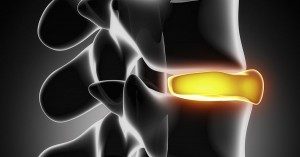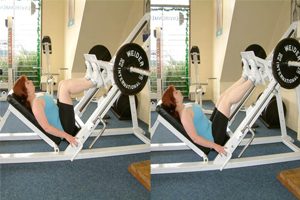Spotlight on Massage and Lower Back Pain
 According to the National Institutes of Health, lower back pain is the second most common form of chronic pain after headaches. Experts estimate that approximately 80% of Americans will seek help for low back pain at some point during their lives. Public health officials and insurers estimate that Americans spend $50 billion each year on treatments that are often ineffective. The standard treatment for lower back pain is to take muscle relaxants, painkillers or anti-inflammatory medications, along with physical therapy and back exercises. However, few medical interventions relieve pain reliably, and continuing to take painkillers on a long-term basis is not advised. Massage, on the other hand, has been found to be an effective way of dealing with back pain on a regular basis.
According to the National Institutes of Health, lower back pain is the second most common form of chronic pain after headaches. Experts estimate that approximately 80% of Americans will seek help for low back pain at some point during their lives. Public health officials and insurers estimate that Americans spend $50 billion each year on treatments that are often ineffective. The standard treatment for lower back pain is to take muscle relaxants, painkillers or anti-inflammatory medications, along with physical therapy and back exercises. However, few medical interventions relieve pain reliably, and continuing to take painkillers on a long-term basis is not advised. Massage, on the other hand, has been found to be an effective way of dealing with back pain on a regular basis.
Treatment for lower back pain accounts for approximately a third of all visits to a massage therapist. A study published in the Annals of Internal Medicine found that patients suffering from lower back pain of unknown origin were helped more by massage than by conventional medical treatment. Of 401 total study participants, 133 received traditional medical care with no massage, 132 received structural massage (which addresses particular muscular and skeletal structures that cause pain) and 36 received relaxation massage (a general form of massage, such as Swedish, intended for overall relaxation).
Participants in the massage groups received one hour-long massage once a week for 10 weeks. All participants completed a questionnaire at the beginning of the study, then again at 10 weeks, 24 weeks and a year after the beginning of the study to report on their perceived pain. Both kinds of massage groups reported greater pain relief and ease of motion after 10 weeks of treatment than the medical group.
An average of 37% of the patients in the massage groups reported that their pain was almost or completely gone, while only 4% of the usual care group reported similar results. This was also the case at 26 weeks. However, at the one-year mark, the benefits to all groups were about equal. The type of massage used did not seem to matter, with both massage groups experiencing comparable levels of pain relief. The massage groups were less likely to report having used medication for their back pain after the 10 weeks of intervention, and they also reported having spent fewer days in bed and had lost fewer days of work or school than those in the usual care group.
Dr. Richard A. Deyo, professor of family medicine at Oregon Health and Science University in Portland says of the study, “I think this trial is good news in the sense that it suggests that massage is a useful option that helps some substantial fraction of these patients. Like in most other treatments, this is not a slam dunk, and it’s not like a cure, but it’s something that seems to offer a significant benefit for a substantial number of patients.” Deyo sees massage as a way of people being able to break out of the pain-inactivity cycle. He notes, “I don’t see massage as the final solution, I see it as maybe a helpful step toward getting people more active.”
As always, chiropractic care shows the greatest success in the treatment of all types of back pain. We have found that chiropractic care combined with massage can be a very effective option for many of our patients. If you are currently experiencing back pain, be sure to call our office to schedule an appointment with Dr. Oblander. 406-652-3553

 As we age, the discs in our spine start to naturally break down due to normal, everyday living . This is commonly referred to as disc degeneration and can result in pain in the neck and/or back area–pain that is felt by almost half of the population 40 years of age or older . For those over 80, this rate doubles to a whopping 80 percent, which makes understanding what factors promote this particular condition critical to raising the quality of life as we enter
As we age, the discs in our spine start to naturally break down due to normal, everyday living . This is commonly referred to as disc degeneration and can result in pain in the neck and/or back area–pain that is felt by almost half of the population 40 years of age or older . For those over 80, this rate doubles to a whopping 80 percent, which makes understanding what factors promote this particular condition critical to raising the quality of life as we enter  If you are like most people, working out just for the sake of working out does not really appeal (although there are many dedicated gym buffs who couldn’t live without their daily workouts!). We all know that it’s important to exercise regularly if we want to live a long and healthy life. However, if you find the idea of trotting along on a treadmill for 15 minutes and then spending half an hour of working out on Nautilus machines to be about as exciting as a trip to the dentist, then this article is for you!
If you are like most people, working out just for the sake of working out does not really appeal (although there are many dedicated gym buffs who couldn’t live without their daily workouts!). We all know that it’s important to exercise regularly if we want to live a long and healthy life. However, if you find the idea of trotting along on a treadmill for 15 minutes and then spending half an hour of working out on Nautilus machines to be about as exciting as a trip to the dentist, then this article is for you! Many studies have found that chiropractic care is a safe and effective treatment method when dealing with a number of spine-related issues. The American Chiropractic Association even lists a number of research studies on their website that show that it is a valuable treatment method for easing (and sometimes completely resolving) back pain, neck pain, headaches, and more.
Many studies have found that chiropractic care is a safe and effective treatment method when dealing with a number of spine-related issues. The American Chiropractic Association even lists a number of research studies on their website that show that it is a valuable treatment method for easing (and sometimes completely resolving) back pain, neck pain, headaches, and more. Countless studies have demonstrated that chiropractic care is a safe and effective way to treat musculoskeletal complaints like back pain, neck pain, or sciatica. Now a new study from Switzerland has looked at the relative benefits of chiropractic compared to medical care for the most common types of pain issues.
Countless studies have demonstrated that chiropractic care is a safe and effective way to treat musculoskeletal complaints like back pain, neck pain, or sciatica. Now a new study from Switzerland has looked at the relative benefits of chiropractic compared to medical care for the most common types of pain issues. Tension and cervicogenic headaches are clinically similar, but they are associated with varying personality traits. A recent
Tension and cervicogenic headaches are clinically similar, but they are associated with varying personality traits. A recent  With headaches being one of the most common nervous system disorders worldwide, affecting almost 50 percent of the population at least once annually, finding a way to relieve them is important to when it comes to improving quality of life for a large number of people. Certainly there are several different types of headaches–migraines, cluster headaches, and medication-overuse headaches, for instance–and each one requires a unique approach for treatment.
With headaches being one of the most common nervous system disorders worldwide, affecting almost 50 percent of the population at least once annually, finding a way to relieve them is important to when it comes to improving quality of life for a large number of people. Certainly there are several different types of headaches–migraines, cluster headaches, and medication-overuse headaches, for instance–and each one requires a unique approach for treatment. Back pain is an expensive health problem for both patients and businesses.
Back pain is an expensive health problem for both patients and businesses. 